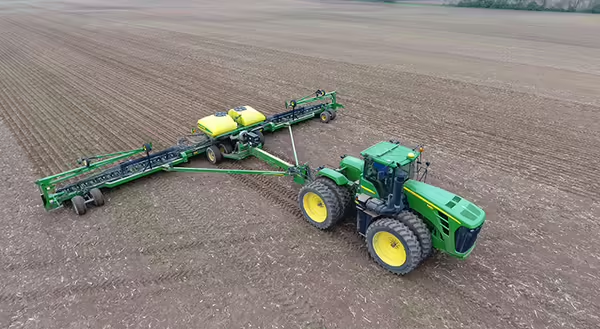
This post is the second in a two-part series analyzing a United States Department of Agriculture Economic Research Service (USDA-ERS) report on the state of farms and ranches across the United States. Part One began by discussing the way farms are classified by the USDA, farm financial performance, and the use of credit and loans. You can read Part One by visiting this link: https://extension.illinois.edu/blogs/farm-focus/2025-01-10-state-us-agriculture-2024-key-findings-and-future-trends-part-one. This post will analyze the remainder of the USDA report with a discussion of government payments to farms and ranches and farm household wellbeing.
Government payments for farms and ranches are often an essential lifeline for operations that are struggling with decreased production, financial difficulties, or a combination of other factors. The report found that 24% of all farms in the United States received some government payments. Small family farms had the highest share of farms receiving payments from the Conservation Reserve Program (CRP) and other Natural Resources Conservation Service (NRCS) programs, with 76% of CRP funds and 41% of all other NRCS program funds going to small family farms. Large-scale family farms represented the highest share of farms receiving other types of payments, with 39% of “countercyclical-type” (i.e., Price Loss Coverage or Agricultural Risk Coverage) and 39% of all other payments (i.e., Dairy Margin Coverage or ad-hoc assistance) going to large-scale family farms. One reason to explain the distribution of payments among different programs could be the types of commodities/products produced by each kind of family farm. The report notes that small family farms represent more significant proportions of production for products like eggs or forages, which are not covered under countercyclical-type programs. In contrast, large-scale family farms represent more significant proportions of production for cash grains, oilseeds, or dairy, which are covered by countercyclical-type payments. This means farms not covered under countercyclical-type programs resort to other government programs, like CRP or others administered by the NRCS.
Federal crop insurance is another form of payment that farm and ranch operations depend on, particularly when adverse weather conditions affect their production. The report found that only 16% of farms and ranch operations in the United States participated in federal crop insurance. The report further found that 66% of farms producing row crops purchased federal crop insurance, but only 17% of specialty crop operations and 12% of livestock operations purchased federal crop insurance. While midsized family farms had the highest share of participants in federal crop insurance (23%), large-scale family farms had the highest share of all harvested acres (46%) and indemnities paid to participants (48%). This, again, can be attributed to the likelihood of large-scale family farms having higher rates of participation in federal crop insurance due to the types of crops they grow. As discussed earlier, large-scale family farms represent higher proportions of production for cash crops and other row crops. In comparison, small family farms represent higher proportions of production for specialty crops. This would mean that large-scale family farms would be more likely to participate in and possibly receive indemnities from federal crop insurance than small family farms.
The report transitions to an analysis of the well-being of farm households based on data for principal operators of family farms. The report found that the median income for farm households in 2023 was $97,984, greater than the median income of all households in the United States of $80,610. Very-large family farms had the highest median income ($1.02 million), while low-sales family farms had the lowest median income ($58,300). Retirement family farms also had a median income ($78,200) lower than the U.S. median household income. When looking across all types of farm operations, 42% of all farm households had an income below the U.S. median, with 73% of low-sales and 51% of retirement farms having an income below the U.S. median.
Nearly all United States farm households earned most of their income from off-farm sources. Off-farm occupation family farms had the highest average income from off-farm sources, with these farms reporting an average of $153,000. Large-scale family farms had the highest average income from their farming operations, with large farms averaging approximately $417,000 and very-large farms averaging $1.89 million. Only two types of farm households had a negative average income from farming, with off-farm occupation family farms reporting an average income of -$3,700 and low-sales family farms reporting an average income of -$5,700. Overall, 51% of all family farms in the United States reported a negative farm income, with 65% of off-farm occupation family farms and 59% of low-sales family farms reporting negative farm incomes.
The state of agriculture in the United States is constantly evolving. Farm and ranch operations must adapt to new production practices, challenges, and opportunities. The USDA ERS publishes an annual report that analyzes the state of farms and ranches across the United States by looking at farm financial performance and production characteristics. Published in December 2024, the latest version of this report found that family farms continue to be the backbone of American agriculture, but there are still some lingering challenges to family farms of all sizes and characteristics. This two-part blog series has gone through some of the information in this report, including the use of credit and loans, the distribution of government payments, financial performance, and many other topics. This report serves as an essential reminder of the value of family farms and provides important perspectives on the ability of family farms to meet the challenges and opportunities ahead of them.